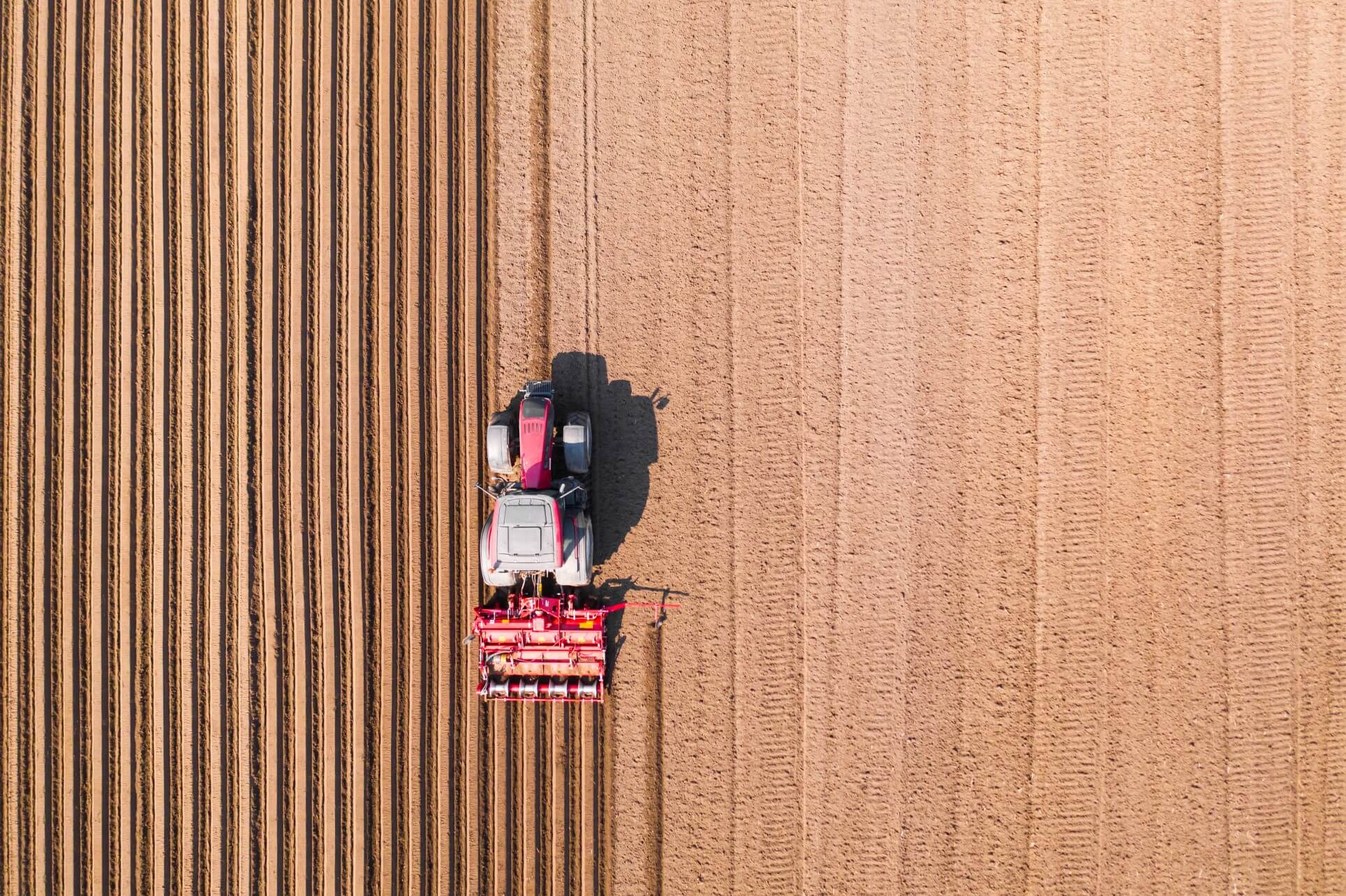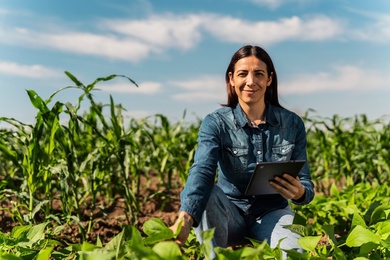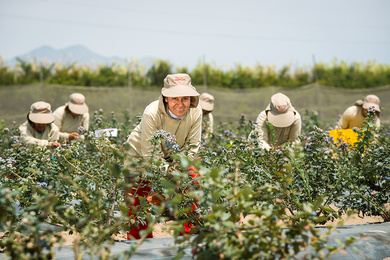Agrophotovoltaics: A Double Opportunity for Latin America and the Caribbean
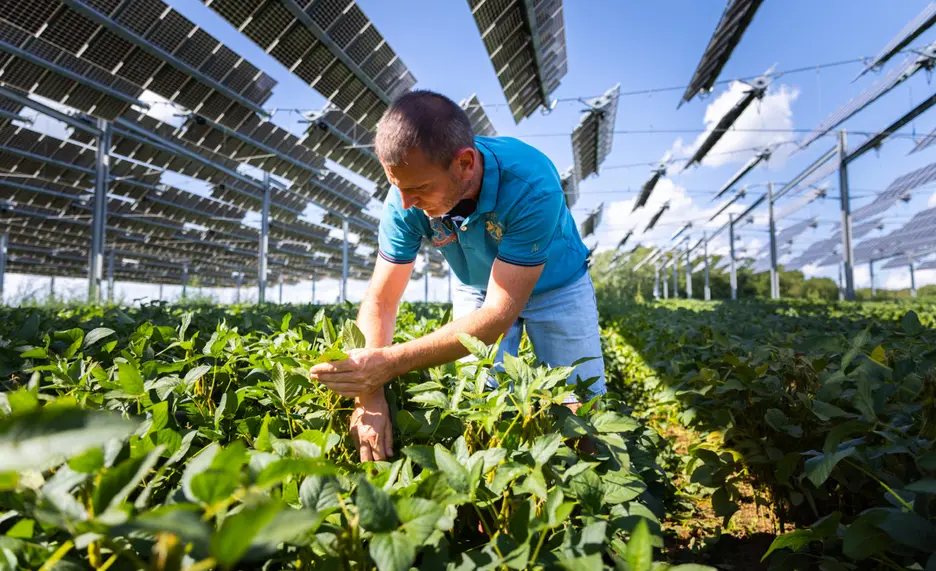
Have you ever wondered if energy and agricultural production are conflicting practices? The truth is that they are. However, there are also solutions, such as agrophotovoltaic (APV) production.
APV combines solar photovoltaic power generation with agriculture on the same land. It’s all about adopting crop growing and/or animal husbandry practices underneath ground-mounted solar panels. By generating renewable energy, increasing agricultural resilience, conserving water and making an efficient use of resources, this technique has the potential to drive a low-carbon, climate-resilient future.
Although this logical concept was proposed several years ago, it is only recently that medium and long-term quantitative results have been obtained, proving the dual benefits of crop farming under the shade of elevated solar panels, with up to 186% land use efficiency.
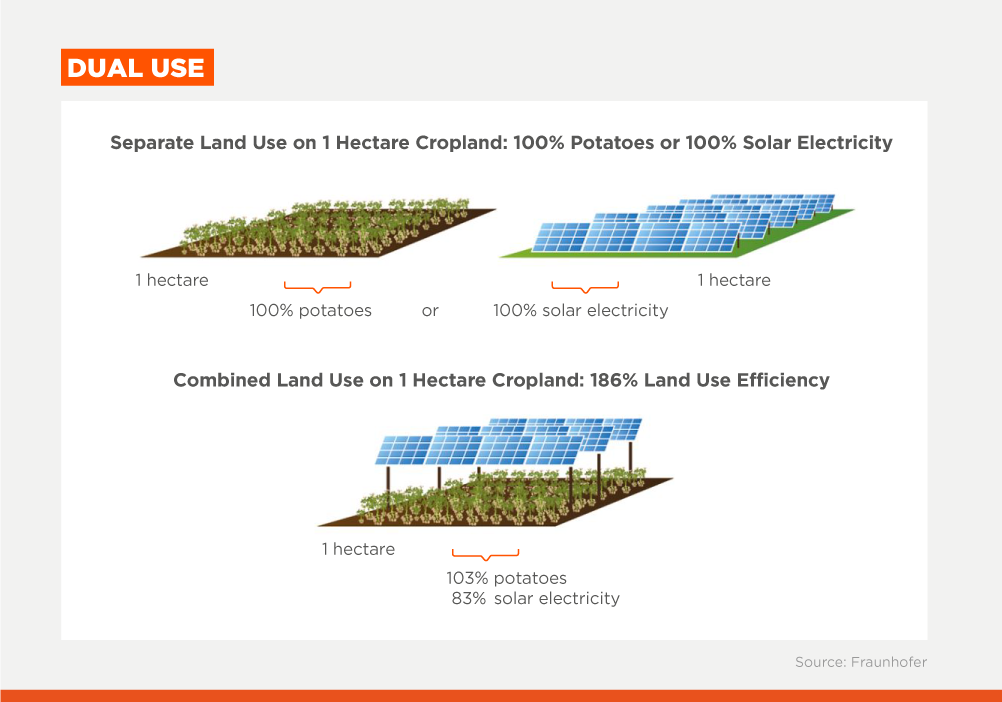
The benefits include higher electricity production, improved crop yields and reduced water consumption for agricultural use.
An APV system increases the climate resilience of crops and animals, as well as the solar panel infrastructure.
A typical APV system has been proven to reduce solar radiation by about 30%, enhancing soil temperature and moisture regulation in winter and summer, decreasing water demand, and increasing crop yields. For animal husbandry, the shade from solar panels has a direct impact on animal welfare mainly during heat waves and droughts.
Additionally, panels optimize the efficiency of electric generation, as the resulting crop evapotranspiration helps reduce the temperature, avoiding overheating. Likewise, other experts have pointed out improvements of up to 38% in the levelized cost of electricity produced through these systems.
In view of climate change impacts, such as expanding desertification areas and extreme heat, implementing APV systems can go a long way towards ensuring food security in Latin America and the Caribbean, as they can be used in extremely hot and dry arid regions.
Agrophotovoltaic farming is ideal for growing coffee, cocoa, peppers, tomatoes, strawberries, lettuce, chard, spinach, legumes and carrots, among others. However, other crops need to be assessed, as the system’s total radiation reduction potential is low. In France, for example, soybean trials have not shown a significant difference between APV and traditional monoculture production systems. It is important to understand that the height of the mounting structure will depend on the agricultural machinery and practices to be used. For example, in monocultures such as soybean, the solar panels are placed at a height of up to five meters.
Since 2017, Japan, France, South Korea, China and the state of Massachusetts in the United States have supported the implementation of APV systems through specific regulatory frameworks.
In the Caribbean, in particular, there is a need for efficient soil management given the relative scarcity of space, as well as a demand for local food and energy production. Facing these scenarios, APV systems could play a key role. IDB Invest is currently supporting studies for an APV project including goat farming, the outcomes of which could be extrapolated to other areas.
It should be noted that for this specific project the land use as defined by local regulations relates only to agricultural activities, not allowing a purely photovoltaic (PV) system to be installed. However, land use authorization was granted as the project involves both animal husbandry and solar panels.
It is estimated that there are 2,200 APV projects worldwide with a combined 2.8 GWp capacity. To date, IDB Invest has financed PV project implementations with approximately 4.8 GWp capacity on a 30,000-hectare area.
According to the International Renewable Energy Agency (IRENA), the installed PV capacity in the region is expected to grow by a factor of 40 by 2050 as a result of declining photovoltaic generation costs. In addition, the imminent green hydrogen take-off in Latin America and the Caribbean could accelerate PV system implementations exponentially, significantly impacting on governance and land use.
In this scenario, the adequate promotion of APV could help increase food security and drive land use efficiency.
To expand APV implementations in Latin America and the Caribbean, IDB Invest provides advisory services for feasibility studies, while promoting partnerships with private companies in the agricultural and energy sectors, as well as public-private partnerships, and encouraging the creation of enabling mechanisms.
(Picture credit: PV Magazine)
LIKE WHAT YOU JUST READ?
Subscribe to our mailing list to stay informed on the latest IDB Invest news, blog posts, upcoming events, and to learn more about specific areas of interest.
Subscribe